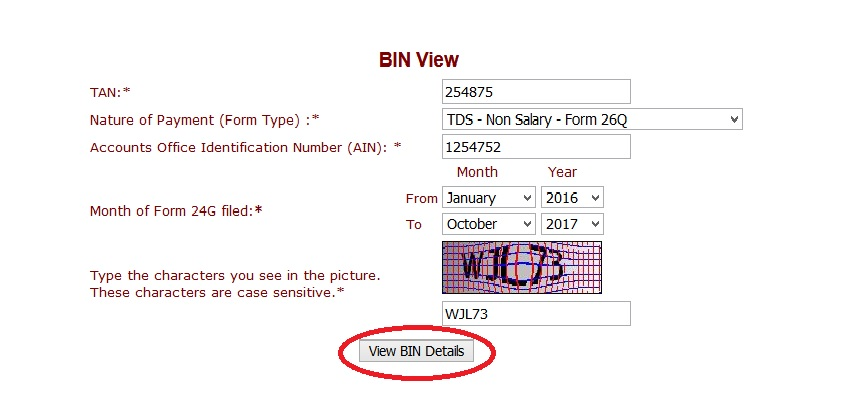Recent Posts
Categories
Introduction
In today’s digital world, businesses rely heavily on data management to operate efficiently. With the massive influx of data, it’s important to have a system in place that can quickly identify and organize it. This is where Bin View comes in. Bin View is a unique identification number that is assigned to each book in a library or inventory management system. The purpose of Bin View is to facilitate the organization, storage, and retrieval of data efficiently. In this article, we will delve into everything you need to know about Bin View.
What is Bin View?
Bin View is a unique identification number that is assigned to each book in a library or inventory management system. This number is used to identify and organize books, making it easier for librarians, inventory managers, and other professionals to locate specific books quickly. The Bin View Identification Number (BIN) consists of a combination of letters and numbers that are unique to each book
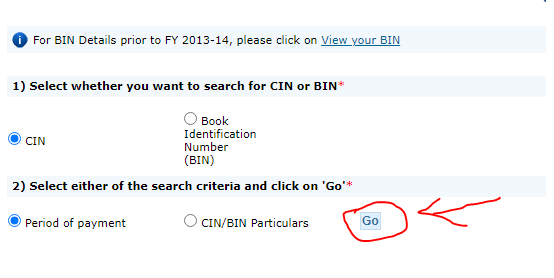
View Book Identification Number (BIN)
The View Book Identification Number (BIN) is a unique code assigned to each book in a library or inventory management system. It consists of a combination of letters and numbers that are used to identify and organize books. The BIN is an essential component of the Bin View system, and without it, the system would not function correctly. Each BIN is unique and can only be assigned to one book at a time.
When is BIN generated?
The BIN is generated when a new book is added to the library or inventory management system. When a book is acquired, it is assigned a BIN, and this number is used to identify and organize the book. The BIN is usually generated automatically by the system, but in some cases, it may be assigned manually.
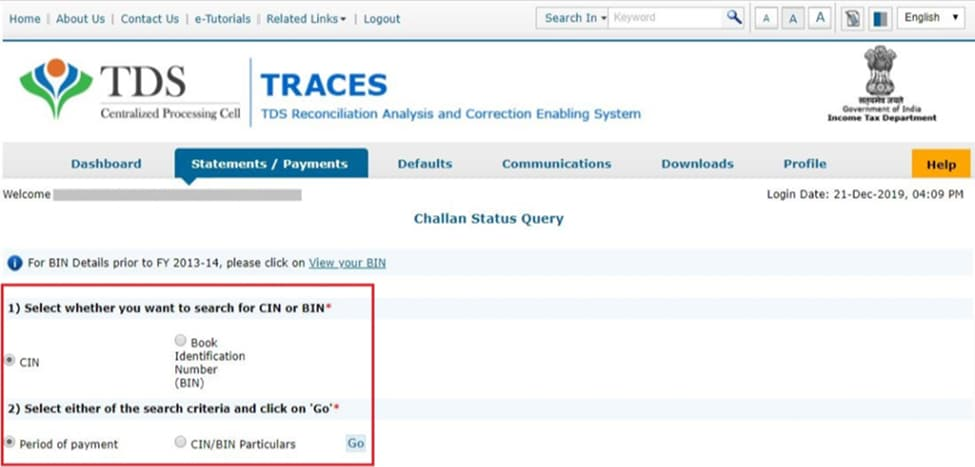
Consequences of non-quoting BIN
Not quoting the correct BIN can result in severe consequences for the library or inventory management system. If a book is not assigned a BIN, it can be challenging to locate it, resulting in a loss of time and money for the library or inventory management system. Additionally, if the wrong BIN is quoted, it can result in the misplacement of the book, making it difficult to locate.
BIN Verification
BIN Verification is the process of confirming that the BIN quoted for a book is correct. This process is essential for maintaining the accuracy and integrity of the Bin View system. The verification process involves cross-checking the BIN quoted with the book’s information in the library or inventory management system. If the BIN quoted is incorrect, it must be corrected immediately to avoid any potential consequences.
Access the TIN portal
Step 1: The user has to visit the official site of the TIN portal to view/ download the Book Identification Number (BIN) Details.
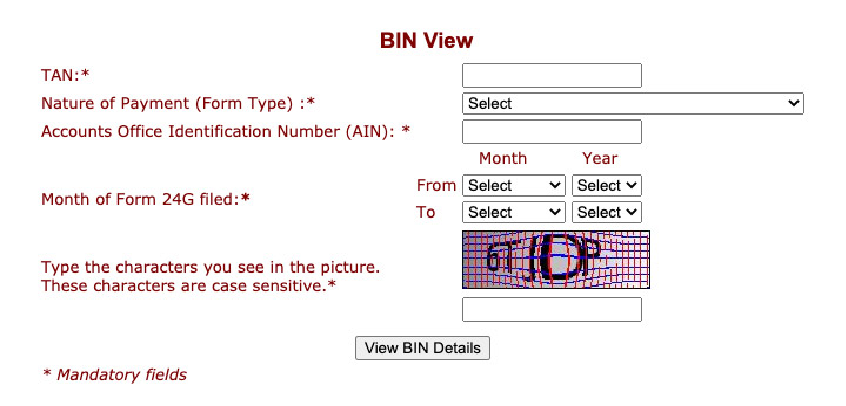
Step 2: Click on the BIN verification link on the portal, the user will be guided through the following pages where BIN will be verified.
Step 3: The user has to complete all the following details:
- TAN Number
- Nature of Payment.
- AIN/ Treasury Number.
- The period for which the user has to view their BIN(Date).
- Captcha text image.
- Different types of options will be available in the section “Nature of Payment”. Here, the user needs to select a suitable form type from the dropdown menu for which the user needs to view/verify their BIN details
- The user has to click on the “View BIN details” icon.
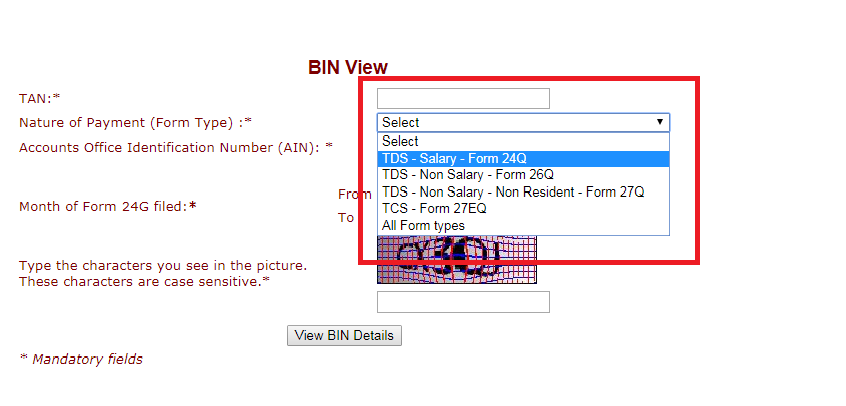
Step 4: Once the above step is completed, the user will be moved to the following BIN verification page. Here, the user needs to enter the following details:
- BIN Amount (enter the amount in the suitable place corresponding to that Receipt Number & DDO serial number).
- Check the Boxes
- The user has to click on the “Verify Amount’ icon.
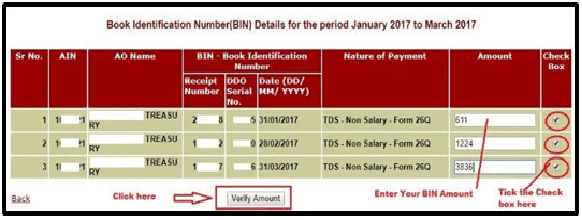
Step 5: The user can view their BIN verification status as it will be displayed on the screen.

BIN Verification Status
The BIN Verification Status indicates whether the BIN quoted for a book is correct or not. If the BIN Verification Status is “verified,” it means that the BIN quoted is correct, and the book is correctly identified and organized in the library or inventory management system. If the BIN Verification Status is “unverified,” it means that the BIN quoted is incorrect, and the book is not correctly identified and organized. In this case, the BIN must be corrected immediately to avoid any potential consequences.
FAQs
Q: Is it possible to change a book’s BIN after it has been assigned?
A: Yes, it is possible to change a book’s BIN after it has been assigned. However, this should only be done in exceptional circumstances, and the change should be recorded in the library or inventory management system to maintain the system’s accuracy.
Q: How many characters are in a BIN?
A: The number of characters in a BIN varies depending on the library or inventory management system. However, most BINs consist of a combination of letters and numbers.
Benefits of using Bin View
There are several benefits to using Bin View in a library or inventory management system. Some of these benefits include:
Efficient organization: Bin View makes it easier to organize books and other items in a library or inventory management system. With the unique identification number, librarians and inventory managers can quickly locate specific items.
Quick retrieval: With Bin View, retrieving books and other items from a library or inventory management system becomes faster and more efficient. The identification number makes it easy to locate and retrieve the item.
Better inventory management: Bin View can help improve inventory management by making it easier to keep track of the items in the library or inventory management system. This makes it easier to identify lost or misplaced items and track usage.
Increased accuracy: Bin View helps to ensure that the correct information is associated with each item in the library or inventory management system. This reduces the likelihood of errors in tracking or locating items.
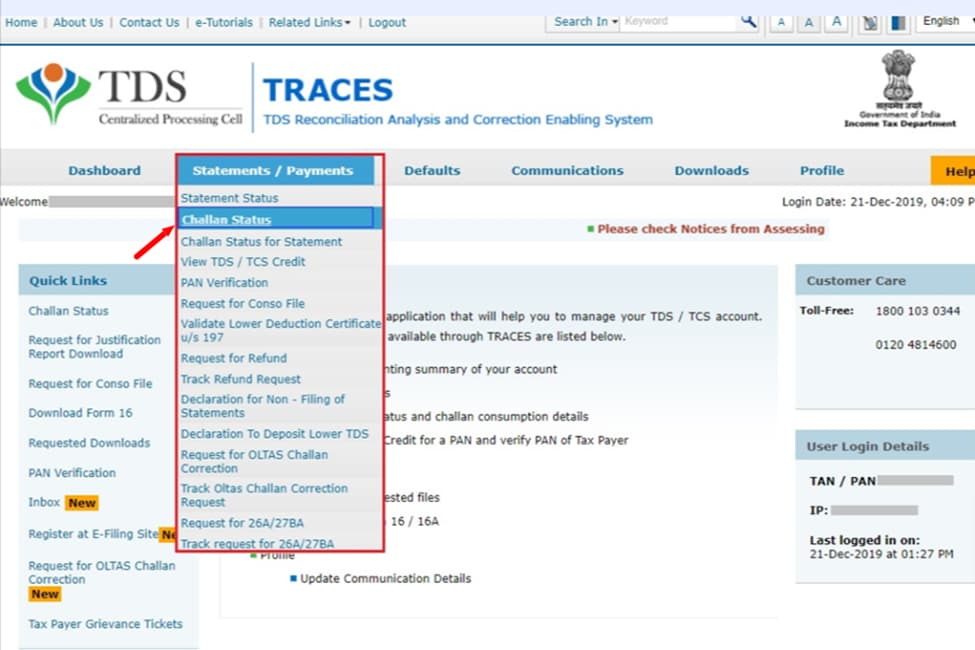
How to use Bin View
Using Bin View is relatively simple. The first step is to ensure that each book or item in the library or inventory management system is assigned a unique BIN. This can be done manually or automatically by the system.
Once each book has been assigned a BIN, it is essential to ensure that the BIN is correctly quoted whenever the book is referenced or moved within the library or inventory management system. This ensures that the book is correctly identified and organized, and makes it easier to locate when needed.
Finally, it is essential to regularly verify the BINs assigned to each book or item in the library or inventory management system. This ensures that the system remains accurate and that potential errors are quickly identified and corrected.
Conclusion
Bin View is a vital component of any library or inventory management system. The unique identification number assigned to each book or item makes it easier to organize and locate items, improving the efficiency of the system. However, it is essential to ensure that each BIN is correctly quoted and verified to maintain the accuracy and integrity of the system.
In summary, Bin View is an essential tool for effective data management, and understanding its use and benefits is critical for anyone involved in library or inventory management. So, make sure you quote the correct BIN for every book and verify the BINs regularly to avoid any potential consequences.

